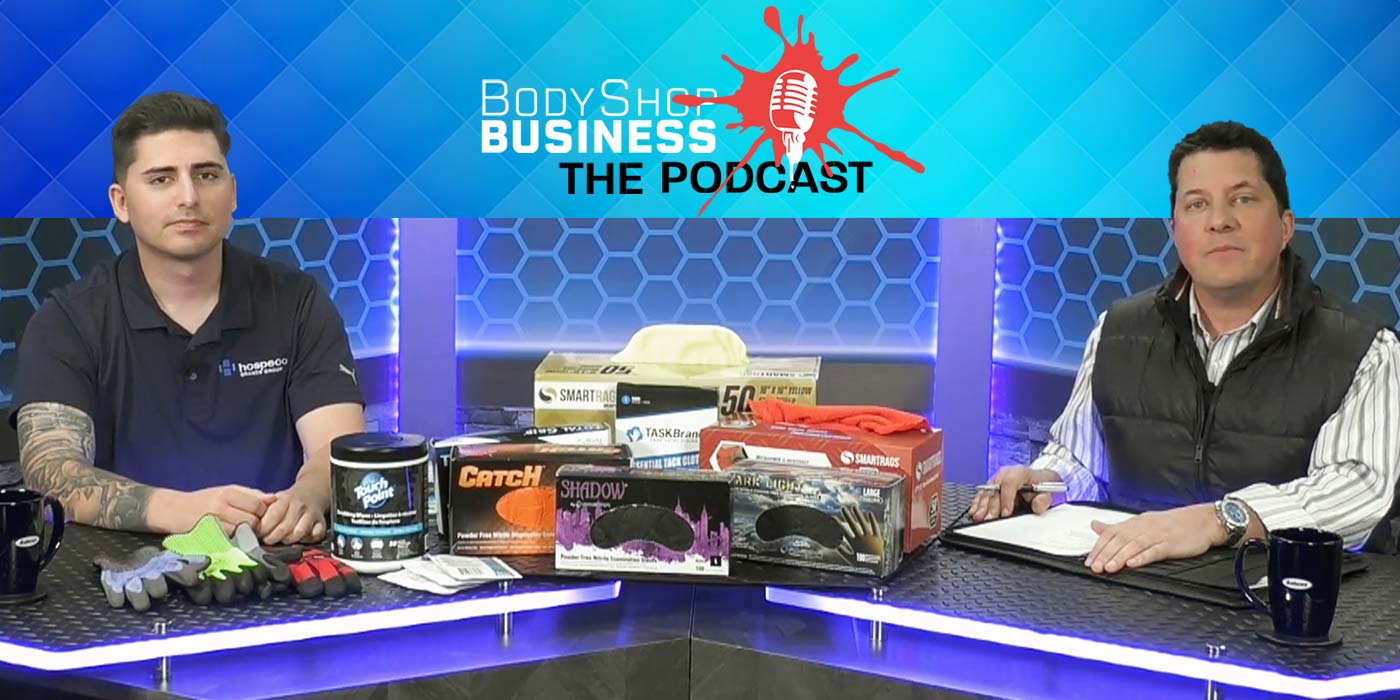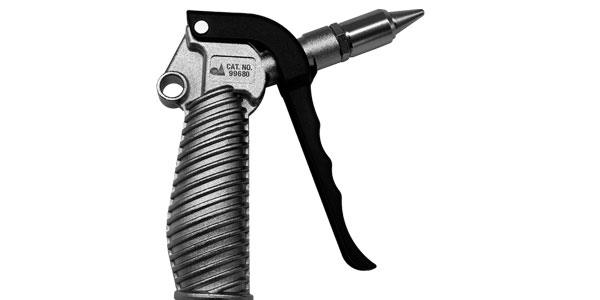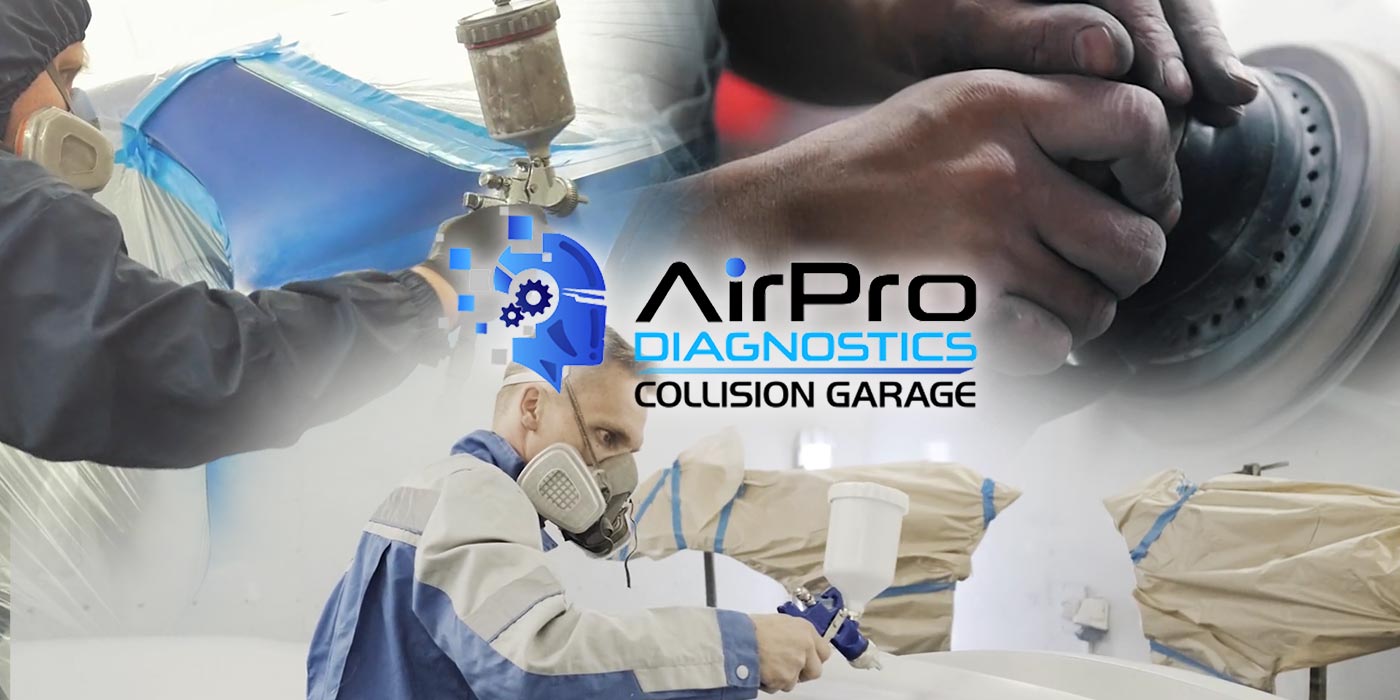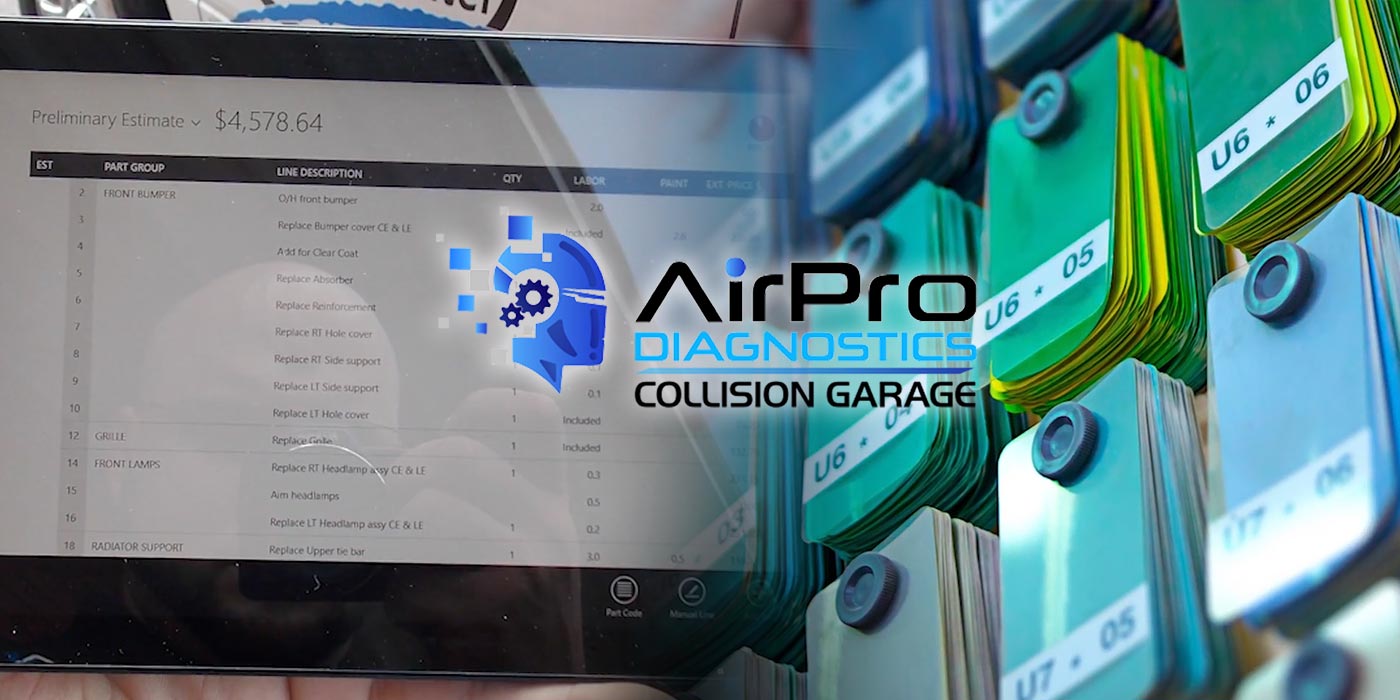If your body shop were in the South Coast Air Quality Management District (SCAQMD), you would have completed the switch to low VOC (volatile organic compound) basecoats no later than Dec. 31, 2008. That’s because the amendments to Rule 1151 called for a change in how the emissions from auto paint were calculated. Prior to July 1, 2008, the shops in that part of California could add the VOCs from their chosen brand of basecoat to the VOCs from their clearcoat, and the total of the two had to be less than 3.5 lbs. The amended rule calls for the clearcoats by themselves to emit no more than 2.1 lbs. of VOC and the basecoats no more than 3.5 lbs. To meet these stricter regulations, most paint manufacturers added water (no VOC at all) to their basecoat color systems.
Shops within the SCAQMD had the California state regulators pushing them, and the paint companies and their jobbers pulling them, to make the switch to compliant systems in time to avoid fines and penalties. Not participating wasn’t an option if they wished to continue to do collision repair in Southern California.
As we’ve reported in the pages of BodyShop Business many times, the actual conversion was much less traumatic than many people predicted. Not only that, the new compliant color systems offered several advantages over the solventborne material: fast hiding because the opacity of the tints was so high, fast drying when moving air was blasted across the finish, and consistent color match with metallic colors, as there wasn’t a big swing in solvent evaporation speeds.
In part because so many consumers in the U.S. are looking to do business with firms that exhibit environmental stewardship, many shops in unregulated parts of the country are considering a switch to waterborne basecoats. Although not compelled to switch by current regulations, these shops see a likely future change in emission rules where they live and currently see a marketing advantage in going green. This may be just the ticket for your shop, wherever you’re located, but it comes with significant costs. This is not something to be undertaken lightly and requires careful planning and considerable investment in time, equipment, training and real-folding green money.
Start at the Top
If you see mandated VOC limits coming soon to your neighborhood or see a marketing advantage in being among the first to apply low-VOC coatings, then there are several things to consider carefully. In previous articles about the switch to waterborne, I’ve interviewed dozens of shops and both the marketing people and chemists of all the major paint companies. In every case, those folks told me this change needs buy-in from everyone affected. All the parties – the shop owner in the front office (his or her money), the production team (their output) and the painters (their technique) – need to recognize that a smooth and successful change to waterborne will require their help and enthusiasm.
Before moving on to shop audits that help predict readiness for changing or enrolling in training that will explain how to get great results from the new material, sit everyone down and discuss the costs and benefits of switching to waterborne. If even one level of the shop team is reluctant, then the chances of success will fall dramatically. Remember, in the SCAQMD, there wasn’t a choice of “if” they should switch, just that it had to be completed by Dec. 31, 2008 to avoid penalties. Frank discussion in your shop about who needs to do what, when and how will identify potential roadblocks early in the conversion process. A select team from your shop should visit another shop currently using the waterborne brand you’re considering. Speaking with current users, seeing the changes required in production flow and actually seeing the finished product will go a long way toward deciding how to proceed. Let’s assume that what your two- to three-person team saw at the shop you visited looked good to everyone. The next step is a shop audit.
Time for an Audit
All the paint companies and many jobbers have a checklist form that makes this step easier. In all cases, they’re looking at the existing shop equipment and conditions – things like freezing conditions – to evaluate the shop’s readiness to switch to waterborne.
If your shop currently mixes paint in-house but stores the entire mixing bank or even the extra tint colors in an unheated area, that will have to change with waterborne.
You’ll need to purchase and employ hand-held air venturis that magnify the volume of air by pulling in ambient shop air along with compressed air. If your shop has an air compressor that seldom shuts off during the work day, the additional CFM (cubic feet per minute) air volume required by the venturis will necessitate an additional or bigger air compressor.
You’ll need spray guns and cleaning equipment dedicated just to waterborne. Remember that currently all the undercoats (primers, surfacers and sealers) and clearcoats are still solvent-based, so you’ll need two distinct paint and waste streams. Typical shop audit forms look at mixing procedures, spraying equipment, drying equipment and cleaning equipment.
Get in the Mix
Because the waterborne tints are very high strength, extremely small amounts may be required in some formulas. And even smaller quantities of mixed color may be sufficient to cover the repair. The scale needs to be checked for accuracy, and actual mixing techniques may need to change. Some amount of agitation is needed for your chosen brand; does the existing paint shaker do the job? Will a new mixing bank need explosion-proof electrical power? Is an agitator bank even required?
Every paint manufacturer has spent millions of dollars on various color tools like chip books, alternate formula decks and wall charts. Switching paint qualities (solvent to water) will require a switch in many of those tools, too. An early audit of what the shop has on hand and what’s still needed will help make the transition easier. This is also a great time to review which other products the shop will stock and use during the repair. Many shops have a hodgepodge of primers and sealers, and each painter may do something different from the next. Waterborne systems have a much lower margin for variety. Using the right product in the right proportion and at the right time is a necessity to make any waterborne brand work well. One last bit of advice: Matching colors early and shooting test panels before painting the car are time well spent in any paint shop.
Drying Equipment
As mentioned previously, all shops considering waterborne basecoats will need to purchase and employ hand-held air magnifiers. More sophisticated air movement devices may also be required. When shopping for an air venturi, pay close attention to the volume (CFM) of air they consume. Research has shown that there is a huge swing in how much air these devices require, from a low of 8 or 9 CFM to a high of 20 to 25 CFM. Consider that for every 1 horsepower on your compressor’s electric motor, you get about 4 CFM of air at 90 PSI. So a 10-horsepower air compressor will produce about 40 cubic feet of air (10 HP x 4 CFM = 40 CFM). Adding an air blower venturi that takes just 15 CFM will tax any compressor. Mounting two or three blowers on a “tree” can suck all the compressed air from the entire shop.
While inexpensive to acquire, the hand-held blowers may not offer the most economical solution to moving more air. Remember that the water trapped inside the paint film has no impetus to get out. Petroleum solvents are lighter than air and readily evaporate into the atmosphere. Water is content to stay where it is, especially in humid conditions. The way to get the water out quickly is to keep good heat in the booth and to blow air across the paint film. This disrupts the surface of the paint and allows the water to escape – just like drying your hands under a blower in a public restroom.
Auxiliary air movers fall into two basic categories: bladed fans and air jets. Bladed fans are mounted either through the filter media in the intake plenum or in cabinets mounted in the corners of the booth. In either case, they move the existing clean, filtered air inside the spraybooth faster. In some cases, these fans can increase the speed of the air by a factor of two or three, up to several hundred FPM (feet per minute).
Air jet cabinets can take air from inside the booth, inside the intake plenum or from the ambient shop atmosphere. After ducting the air to the cabinet and filtering it somehow, these adjustable jets blast the air across the painted surface, forcing the water out of the paint film. Some brands come with aiming lasers that allow the painter to direct the flowing air to exact spots on the vehicle, like under door handles.
There’s another choice to increase the air flow in the booth: increase the output of the existing air replacement furnace. Typically, these devices heat and discharge 10,000 to 12,000 CFM of air. Newer booths may come equipped with larger furnaces (18,000 to 20,000 CFM) and two-speed switches. The older units can sometimes be retrofitted with larger pulleys or bigger motors to increase air flow, too.
Squeaky Clean
Waterborne resins will stick to bare metal very well. The painters I’ve spoken with say they have to clean their waterborne spray guns more frequently and more thoroughly than they did with solvent material. While this is a change in procedure, it’s hardly insurmountable. To clean the spray guns quickly and efficiently, the shop will have to purchase another gun washer designed especially for waterborne. Not only is another gun washer required, so is creating a separate waste stream. It’s inappropriate and may even be illegal to mix waterborne and solvent waste together in the same hazardous waste drum.
Shops in unregulated areas should investigate not only how much their permitted waste hauler will charge to dispose of the waterborne paint waste but if they’ll accept it in the first place. It’s typically more expensive to legally remove the waterborne material because it can’t be sold for fuel. It doesn’t burn nearly as well as the stuff with thinner in it! And no, it’s not acceptable to pour the waterborne paint waste down the drain in the sink – it still contains solvents, resins and pigments that can harm the local environment.
More to Check
Many shop audit checklists include even more data to help determine the shop’s readiness to apply water. Included might be the lighting in the booth, the filter media (both intake and exhaust), the appropriate support products (which primer for plastic, which for steel) and polishing time. As I said earlier, this switch isn’t a free ride, and only careful consideration and preparation will make the transition successful.
In California, many paint companies and their jobbers contributed real money toward required equipment and training to make their customers compliant and successful. No such pile of money exists in unregulated areas. The cost of conversion in equipment alone can be as little as several thousand dollars and as much as tens of thousands of dollars. Be clear where this money will come from before you begin.
Other costs that may affect your shop are the return of unopened solvent-based material and the disposal of open containers considered as hazardous waste. Most jobbers will take back unopened, unexpired solvent tint colors and support products. Most jobbers will not accept opened containers of tint. Why? Well, did your painters really agitate each tint 10 minutes on the shaker before pouring off any? Did they really turn on the motorized agitator bank four times a day? If not, the remaining tint color in your opened can isn’t the true concentration and risks throwing off every color mixed with it. Any shop in an unregulated area would do well to include an exact plan to use up as much of their solvent material as possible before switching to waterborne.
Don’t Forget Training
While many shops told me that a buy-in from all players was necessary for their own success, everyone said that attending the training at the paint companies’ training center close to conversion time was critical as well. The new waterborne, low-VOC coatings don’t mix, apply or act like solventborne finishes. Most of the trouble in the SCAQMD shops came from painters who insisted on applying the new stuff like the old stuff. Every paint company has expressly designed training that teaches their users how to handle, agitate, mix, spray, clear, clean and dispose of their brand. You cannot short-circuit this step.
The closer your painters can time the training to the actual in-shop conversion, the better. Most paint companies and jobbers will put one of their technicians in the shop for a few days to answer any questions and solve any problems the painter has after formal training. If weeks elapse between the formal training and the actual installation, people begin to forget. A true buy-in from everyone in the shop will enable the painter to be gone at the appropriate time and for the jobber to have access to the paint room to remove the old and install the new at the perfect time.
A Big Deal
If this article sounded like I don’t like waterborne, I’ve given you the wrong impression. I think it’s better for the environment and has some unique and beneficial advantages. But it isn’t a switch that should be made on a whim. As many shops know, you can change from one brand of solvent paint to another with minimal disruption. Same spray gun, same gun cleaner, same procedures in the booth. You may experience a slight decline in productivity until the painters learn the shortcuts in the new brand. But changing to waterborne is a bigger deal. Expenditures in money, time, training and process change will all be required. In exchange, your shop can market itself as being on the cutting edge of paint technology and showing concern for local air quality. The good news is that many of the SCAQMD shops are now producing more and better-looking work while saving the environment. You could, too – just do your homework first.
Shop Owners and Jobbers Say Transition Flowed Nicely…
“We had a comprehensive implementation plan that addressed our shop cultures, organizational necessities and exact implementation schedules. With the support of the our paint manufacturer’s people and our top management, we had a specific game plan for every location. As a result, we’re very pleased with the smooth transition to compliant material.” – Rusty Rauls, vice president and COO, Fix Auto
“The change to waterborne has been much easier than the change to low-VOC solvent material in 1989. We’ve found that the painter’s acceptance has been overwhelmingly positive. The system we’re using is very easy to use. The support from our paint manufacturer has been more than we could have asked for. We’re in Northern California, where the regulations do not yet call for 3.5 basecoats, but we’re intending to switch every one of our California customers to water because it works so well.” – Don Dutra, vice president of sales Northern California, Martin Auto Color
“I firmly believe that water is a better way to go. Color match is terrific and our customers are using less paint. Our paint manufacturer has been very supportive throughout the process. After a formal training class, we stay in the shop with the painters for four to five days and take the solvent tints out with us when we leave. The results have been great.” – Todd D’Angelo, president, D’Angelos Automotive & Industrial Coatings, Oxnard, Calif.
“I sprayed waterborne 10 years ago and liked it a lot. We got back on board as soon as we could, and it’s been great! The product works very well and is better for my health and the environment. Thanks to my jobber and my paint manufacturer, the conversion went very smoothly. They both provided the hands-on technical support I needed to keep our production at full speed. It has been a very positive change for everyone, and our repair quality is better then ever.” – Rande Lance, paint shop manager and lead painter, Prestigious Auto Body, Goleta, Calif.
“There are lots of positives with the system we’re using: no mixing bank because the tints don’t settle, better color match, and the mixed colors look just like the color chips. The metallics match OEM very well and the time between coats is about half of the solvent system. The only downside is that surface prep must be right on – no pinholes or scratches because the water material hides faster because it’s a thinner coating. We are very glad we switched early.” – Lano Quevedo, general
manager, City Body Repairs, San Jose, Calif.
Waterborne Series Part 1: A History of Automotive Finishes
Waterborne Series Part 2:
Equipment Needed for Waterborne Conversion
Writer Mark Clark, owner of Professional PBE Systems in Waterloo, Iowa, is a well-known industry speaker and consultant. He is celebrating his 21st year as a contributing editor to BodyShop Business.













